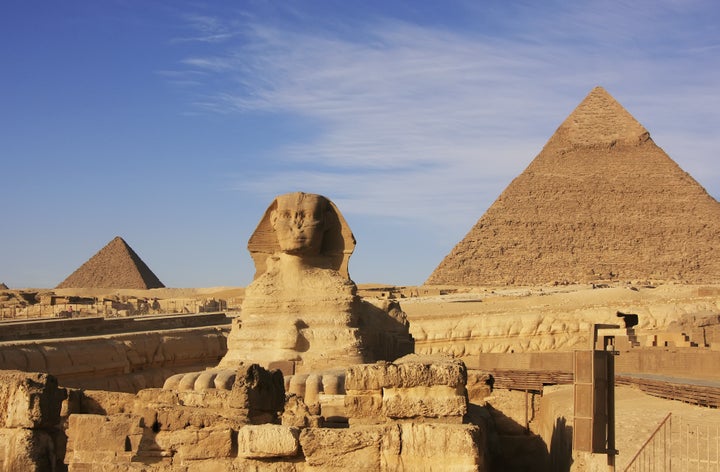
The study of archaeology can be a double-edged sword. As renowned archaeologist Kristen Romey put it in 2012 while discussing the fate of the as-yet unopened tomb of China's first emperor, it’s “ultimately a destructive science. You have to destroy stuff in order to learn about it.”
But now, thanks to advanced technology, it seems scientists may be able to take a peek deep inside some of the world’s most prized ancient sites -- without wrecking a thing.
According to Forbes, there are currently plans to use cosmic rays and other techniques to scan some of Egypt’s ancient pyramids, including the two largest Pyramids of Giza. The project, entitled Scan Pyramids, will reportedly allow scientists to see inside the ancient structures, offering a glimpse into the pyramids’ architecture and interior design.
Hidden chambers could also be revealed.
“The survey will be implemented through invasive -- though non-destructive -- scanning techniques using cosmic rays in cooperation with scientists and experts from Japan, France and Canada,” Egypt’s antiquities minister, Mamdouh Eldamaty, told Ahram Online.
Eldamaty reportedly kicked off the project, which is expected to run through 2016, at a news conference on Sunday. He said the so-called Bent Pyramid in Dashour and the nearby Red Pyramid will be the first two structures to be scanned. Scientists will then move on to the famous Pyramid of Cheops (also known as the Great Pyramid of Giza) and the Pyramid of Chephren, the second largest pyramid on the Giza plateau.
AFP says the project will use “revolutionary visualization techniques,” including infrared thermography, cosmic particle detectors and 3D laser scans.
Scientist Matthieu Klein of Canada's Laval University said his team will be “scan[ning] several meters beneath the surface without touching the structures,” per the AP.
Klein said “there could be interesting things there, even a few meters deep, two or three blocks deep.”
As Forbes notes, scientists have used similar scanning techniques to explore ancient pyramids in Mexico and Belize, as well as the reactors at Japan’s Fukushima nuclear site.
In September, archaeologist Fredrik Hiebert predicted that scanning and other advanced technology will help scientists solve some of the most enigmatic of the world’s archeological mysteries by the end of the 21st century.
Technology like ground-penetrating radar, for instance, could help locate the tomb of Genghis Khan or Alexander the Great, he told National Geographic. Remote-sensing techniques could also finally offer scientists a glimpse into that enormous, mysterious tomb of China's first emperor.
Scientists said recently that would be using similar techniques to analyze King Tut's famous tomb.
Earlier on HuffPost:
